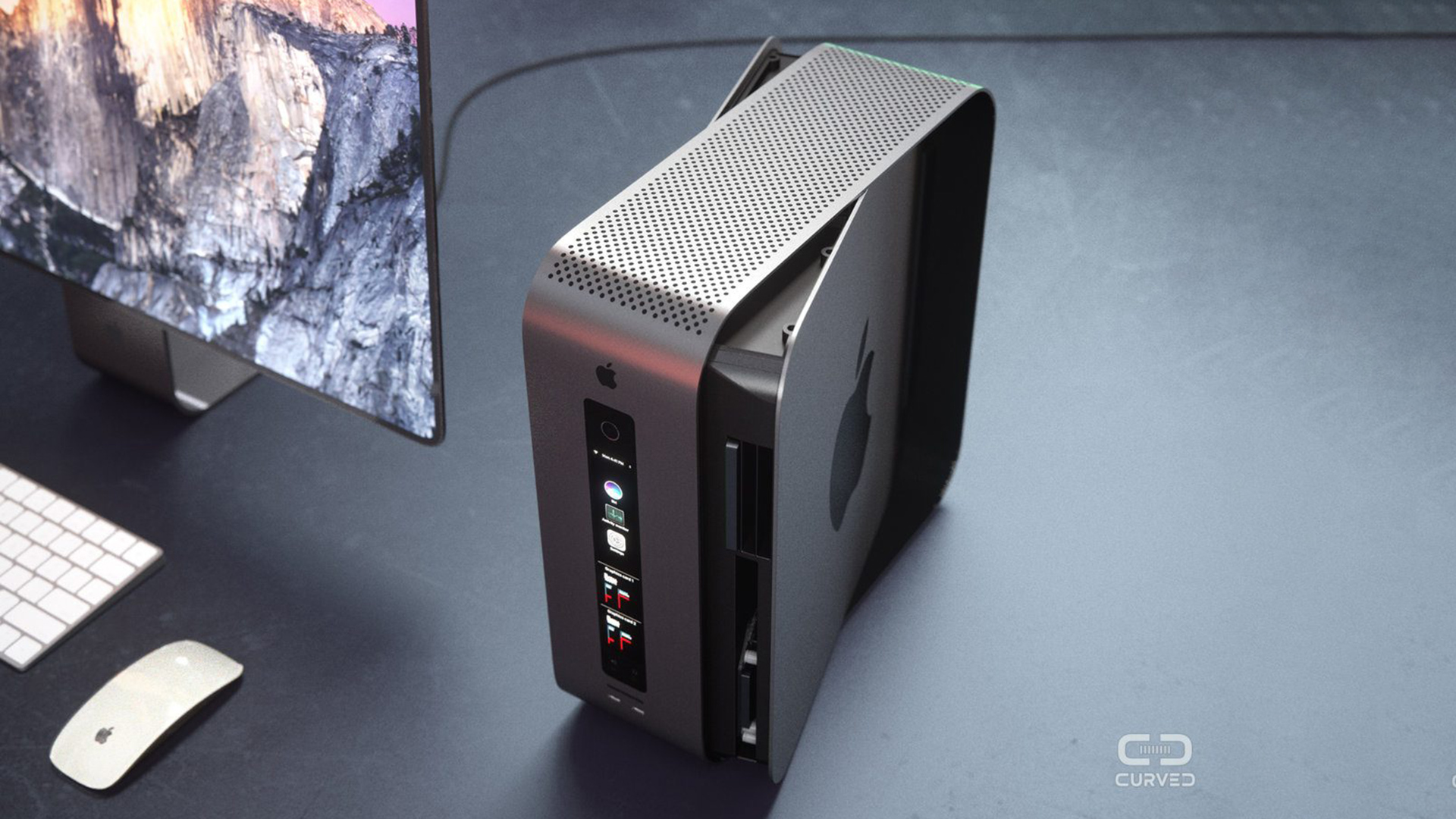
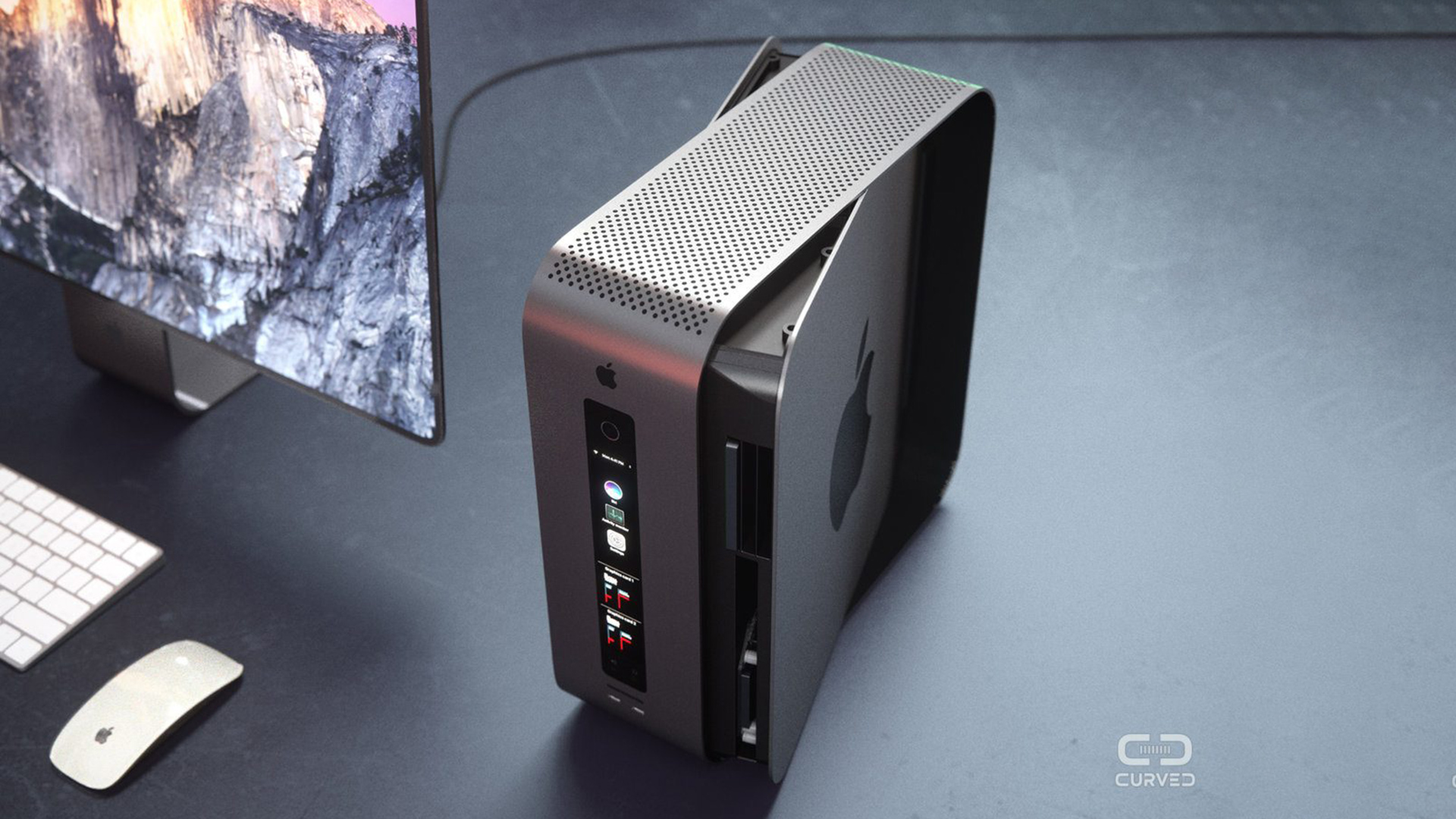 A concept render of a possible future Mac Pro courtesy of German website Curved.
A concept render of a possible future Mac Pro courtesy of German website Curved.
Apple's Worldwide Developer's conference is scheduled for June 3-7 this year. It's entirely possible that we'll see the new Mac Pro for the first time. And when we do, it will be a big deal.
This is what Apple says about the event:
"Now in its 30th year, Apple’s biggest event will bring together the world’s most innovative and creative developers. With more than 1.4 billion devices now running iOS, macOS, watchOS or tvOS, WWDC 2019 will give attendees insight into the future of these platforms and work alongside the Apple engineers behind the technologies and frameworks developers rely on."
So no real clues there, which is normal. If we are going to see the Mac Pro, I'd expect this to be a preview, rather than a full-on launch. But I don't know.
There have been rumors about the new desktop. One of them has it looking like a pretty conventional computer box, with a fast, but not particularly innovative specification: top end but without anything shockingly new. It does mention "Thunderbolt 4", which makes me skeptical, because there is no Thunderbolt 4.
Well, there probably is a Thunderbolt 4, but only in the labs right now. If it doubles Thunderbolt 3's speed of 40Gb/s then it's going to need a faster PCIe bus too.
Maybe the new Mac will have both of these. I'd be surprised, but pleasantly so.
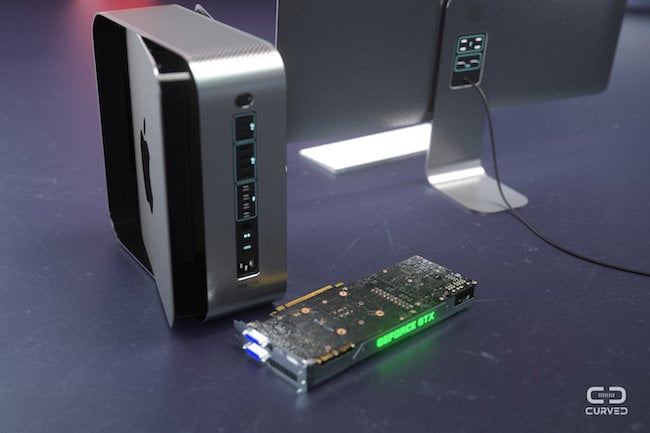
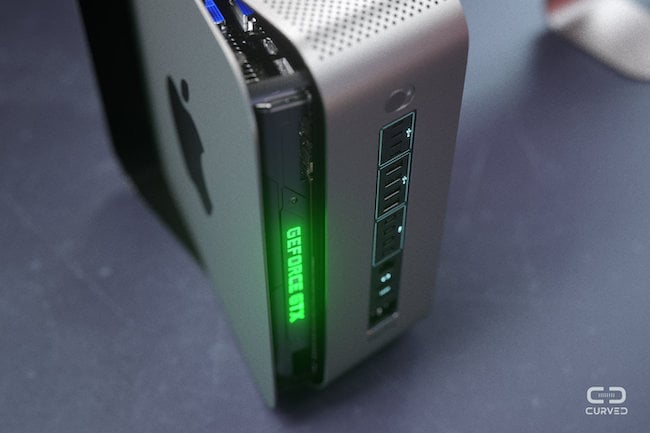
German website Curved.de recently released these concept images for a modular Mac Pro.
Modular
What's making every Mac-head on the planet climb up the walls right now is what on earth Apple means by "Modular". Because almost everything (except the 2013 Mac Pro) is modular in some sense. The original Mac Pro was modular in that you could upgrade stuff, easily - memory, hard drives etc. And you could plug cards into the internal bus.
So maybe the rumor above is right: it's back to the "classic" approach. And the Cuppertino company couldn't go wrong with this. I'd be happy with one.
Except in one sense.
This is almost a once-in-a-generation opportunity. So was the last Mac Pro but for various reasons, it didn't hit the spot in the harsh light of history.
But the new Mac Pro stands at a crossroads, where we either double down on a conventional architecture, or we do something completely different and, well, radical.
Media professionals are often pretty conservative. That's understandable, because change is expensive. It's hard to manage if you have a business. But that doesn't tell the whole story.
Because Mac Pros aren't the only things changing right now. Almost everything else is too. Technology is trending in some radically different directions. Hopefully the new Mac Pro will be the first of a dynasty of professional workstations. So it needs to be ready for the future. Which means that the biggest question of all is: what is that future? What will we need from a workstation in, say five or ten years time?
One trend that is actually blowing the concept of a "classic" desktop form factor out of the water is the speed of modern (and future) interconnects. For a long time the possibility of a fully modular architecture has been mooted. And I've always seen this as the direction we would ultimately go. Why, if you could plug external modules into a processing unit, would you want to put them all into the same box? Unless it's to keep the dust off.
We're starting to see this architecture with the arrival of eGPU devices. It's tempting to think that Apple's openness to Blackmagic making eGPUs for its Macbooks and iMacs is evidence of Apple thinking along this path.
In what might not be a complete coincidence, COMPUTEX, one of the biggest computer expos, is taking place in Taiwan 28th May to 1st June. That's two days before Apple's WWDC. I've heard rumors about PCIe 4 and just possibly Thunderbolt 4 being announced at this show.
I don't want to add 2+2 and get 17 here, but it is an intriguing temporal alignment.
And if there's Thunderbolt 4 and PCIe 4, there's almost no peripheral that can't be interconnected externally at internal speeds. It would seem that it's just the right time to do this.
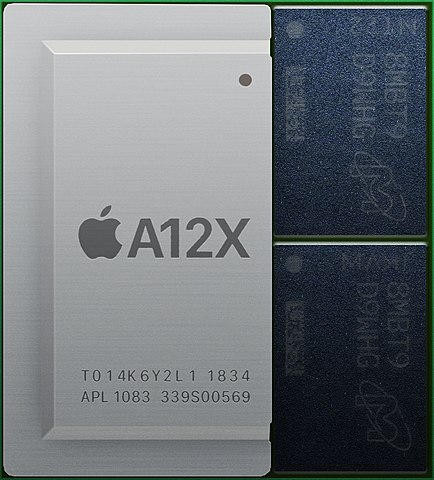
Apple's A series chips are now very serious contenders. But will the new Mac Pro be the start lof a migration to them for desktop machines? Image: Wikipedia - Henriok
Even more radical
Another technology trend that simply can't be ignored is ARM chips. These are the processors that you'll find in smartphones and tablets. Apple has its own version - its "A" series chips, which are now so powerful that they're competitive with at least mid range laptops - including Macbooks. Apple arguably has a healthy position in comparison to other chip designers - to the extent that it's no longer laughable to suggest that its processors might take over from the traditional Intel ones. This wouldn't be simple.
It wouldn't be simple because it changes everything. Applications that run on Macs now, won't run on the new chips. Apps written for IOS devices might. But not under Mac OS. Some big changes would be needed.
But this has happened before, when on June 6th 2005, Apple announced that it was moving from Power PC to Intel. It was a seminal moment (not least because it facilitated Bootcamp, which meant that you would run Windows or even Linux on a Mac, directly).
It was a lot of work for developers - and Apple helped out with a sort of compatibility mode for programs that hadn’t yet been converted. But it was worth it in the long run: the new Intel-based Macs were popular, and they brought the - until then - somewhat niche Mac user community a little bit closer to the mainstream.
Reality check
But hang on! How could Apple (or anyone!) possibly build a professional workstation out of mobile phone chips?
Well, I’m tempted to say “easily” on the grounds of the ever increasing power of these devices. But you’d need a lot of them. In one sense, that’s not a problem. They’re relatively inexpensive, and their power consumption is small compared to full-sized workstation CPUs. It would fit the “modular” regime nicely if Apple were to put groups of their CPUs in building blocks for the modular system
Will it happen?
If I had to bet, I’d say most likely not at this stage. But I think it’s almost inevitable in the future. My gut feeling is that Apple will skip this generation of Mac Pro and stick with Intel (or AMD, for that matter).
But we really don’t know anything right now. We have a few credible-looking but unverified rumours, but essentially we’re in a quantum probability cloud which will collapse into certainty the moment Apple makes its announcement.
Until them, we can speculate as much as we like.
I do hope Apple takes this opportunity to make a dramatic leap. You could say that it did that last time, and it didn’t turn out well. But feedback is a very good thing. If it has taken on board the criticisms of the last generation of Mac Pros, then what we’re about to see might be very good indeed.
Tags: Technology


Comments